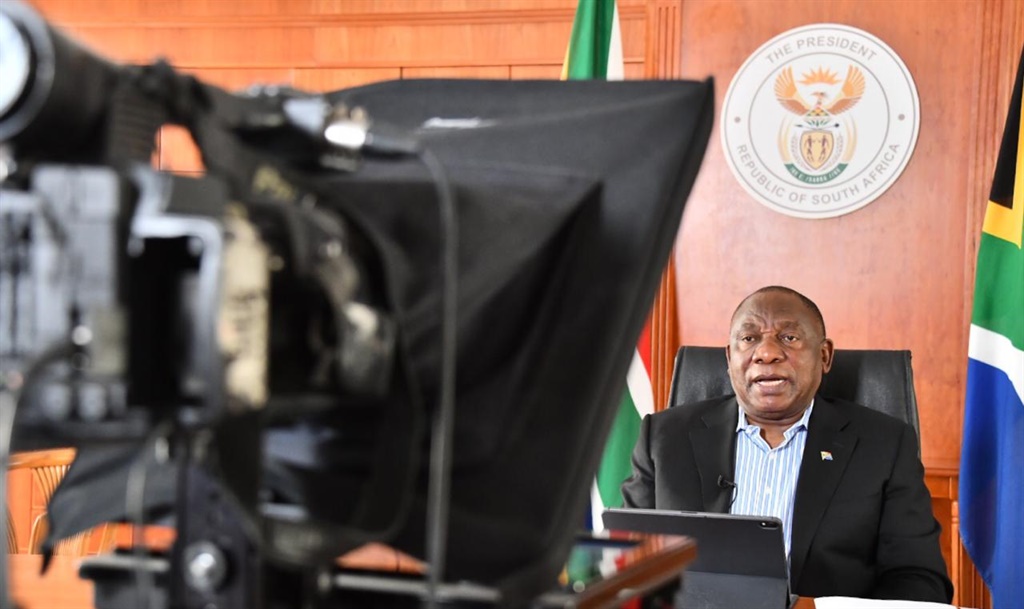


President Cyril Ramaphosa. (GCIS)
- President Cyril Ramaphosa has said that scientists gave government the green light to move to Level 1 of the nationwide lockdown.
- However, he said, the World Health Organisation had called for the gradual easing of the lockdown.
- Government decided to take the middle ground and gradually move from Level 4 to Level 3, and then Level 2 of the lockdown.
President Cyril Ramaphosa has said that scientists who are advising government on the response to the coronavirus crisis recommended that South Africa could move to Level 1 of the nationwide lockdown, as it had become a “blunt tool” in curbing the spread of the pandemic in the country.
But the government weighed this against advice from the World Health Organisation, which called for the gradual lifting of lockdowns across the world.
The president was speaking to a group of editors in a virtual forum with the South African National Editors’ Forum on Sunday.
“The scientists are the ones who continue to lead our effort in all of this. They have advised us that we needed to impose a lockdown, which we did. They said it will help flatten the curve of the infections, and with that we will have sufficient time to prepare ourselves, to prepare our healthcare system, to prepare our tools to be able to deal with the spike that is to follow. They also said once we went through Level 5 and Level 4, they also said the lockdown has served its purpose. In fact what they were also advising was that you could quite easily go to Level 1,” Ramaphosa said.
He said scientists had advised that “the lockdown has become a blunt instrument” and had served its purpose. Government was advised to rely on other tools to curb the spread of Covid-19 infections, such as promoting social distancing, wearing of masks and hygiene.
“But we also had advice from the World Health Organisation. The World Health Organisation was saying we advise that countries should ease lockdowns gradually and slowly and do so as the infection rate go down,” Ramaphosa said.
The president said the National Coronavirus Command Council (NCCC) and Cabinet were armed with both sets of advice and had decided to take the middle road.
ALSO READ | SA to move to Level 3, but risk of infections now even greater, warns Ramaphosa
Government had decided to move the country into Level 3 of the lockdown from Monday, which meant around eight million South Africans would return to work.
“Rather than rush quickly to Level 1, as advised through scientists, we said, let’s go to Level 3 and gradually move to Level 2. This will also help give us time to be more ready throughout the country…” Ramaphosa said.
Nuclear weapon
Answering questions from editors and journalists, Ramaphosa emphasised that the government’s response was wholly guided by scientific opinion.
He maintained that it was time to open up the economy, “because we can’t keep the economy shut forever and a day”.
While acknowledging the risks of a spike in infections that came with Level 3, Ramaphsoa said the government was given a toolbox by scientists to use to flatten the rate of infections
“Having used possibly the big bazooka, and possibly the nuclear weapon, which is the lockdown, the hard lockdown – as we ease, we now need to use other tools,” Ramaphosa said.
He said those tools included wearing masks and social distancing – adding that he was pleased that handshakes were a thing of the past.
Ramaphosa also conceded that the government’s initial plan to leave hotspot areas at a higher alert levels would have been impractical to enforce.
Hotspots are areas with high infection rates and include the country’s economic hubs.
“Originally, the intention was to place hotspot areas at a higher level than other areas, but it became evident that this would prove impractical and undermine efforts to reopen the economy,” Ramaphosa said.
He used Ekhuruleni as an example of how, if it was left at Level 4 of the lockdown, it would have been impossible for people from the rest of the province to travel to that area for work.
“Having different areas on different levels will simply disrupt supply chains, create a multiplicity of regulations to enforce and even increase the movement between hotspots and other areas,” he said.
Instead, government had decided to have a much more focused response in hotspots, Ramaphosa said.
He hoped the new set of interventions would work and that thegovernment would not have to place hotspot areas on higher alert levels.

